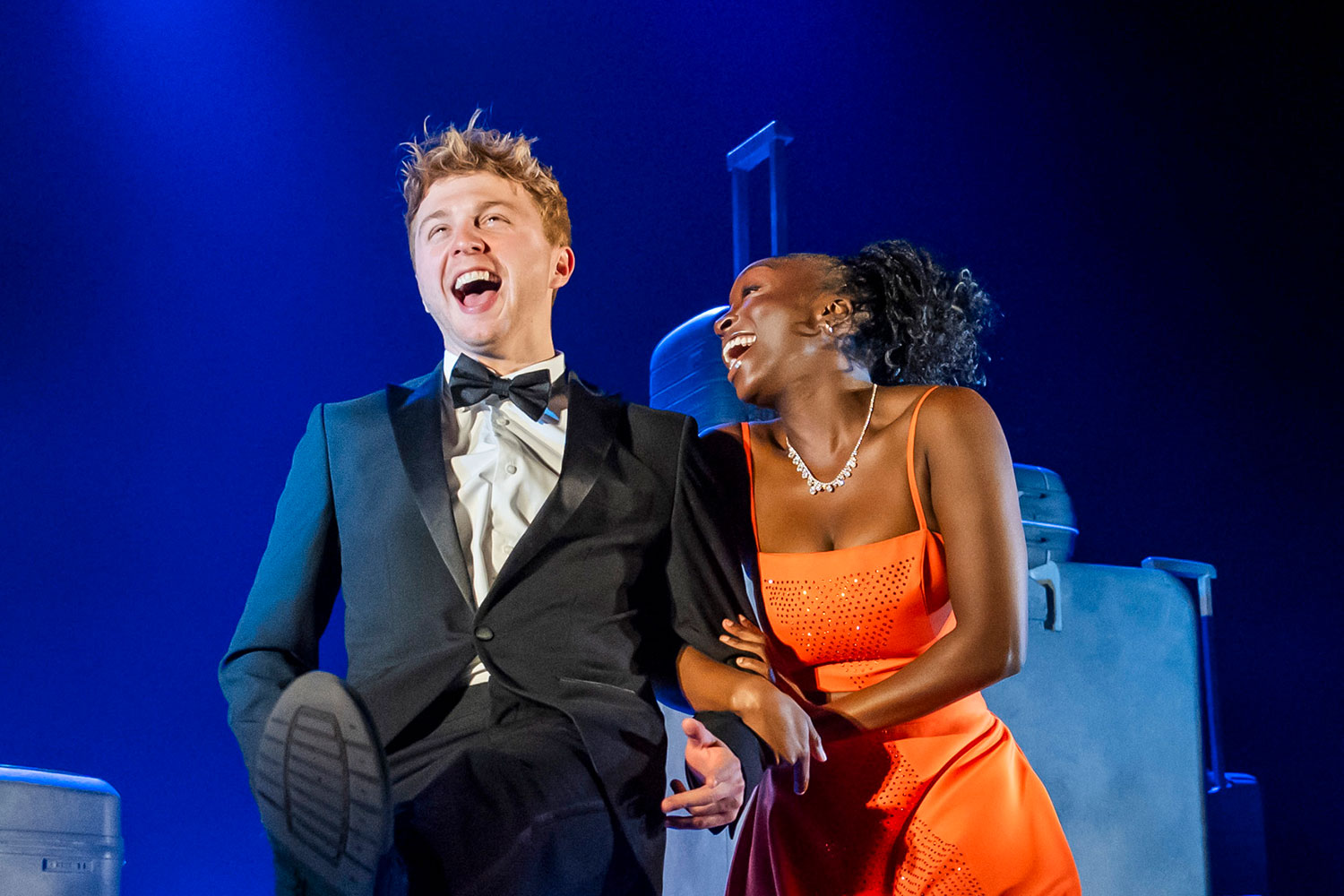Jo Caird: Gr8 Show, Shame Re T’Tweeting
As
I scanned through the press release for A Clockwork
Orange, the show currently running at Theatre Royal
Stratford East (see below for my review), I noticed the
following paragraph, tagged onto the bottom and written in a much
smaller font than the rest of the release:
“Theatre
Royal Stratford East is breaking all the rules of British
theatregoing and embracing the digital age by inviting people to get
out their smartphones and tweet during performances. There is a
designated Tweet Zone fully equipped with WiFi available for every
main stage performance and there’ll be no shushing from the ushers.
Audience members are free to update their online communities with
their thoughts on the show and the experience at the theatre whenever
they want.”
The
scheme, it turns out, has been running since March, but this is the
first I’ve heard of it (how I missed it I don’t know, perhaps I was
too busy tweeting to stay properly informed), but better late than
never, so here are my thoughts.
While
I applaud the theatre’s enthusiasm for using digital social media to
reach out to new and existing audiences, I can’t help but feel that
Tweet Zone is one of those ideas that looks risky and exciting at
first glance, but is actually hugely flawed, and ultimately not a
good idea at all.
TRSE
says that it is “breaking
all the rules of British theatregoing” with the scheme, but it’s
not like those rules are arbitrary: they exist for a reason. We don’t
use our phones in the theatre – whether to text, talk or tweet –
because to do so would be distracting for our fellow audience members
and for the performers (I’m clearly not talking about shows like
You
Wouldn’t Know Him, He Lives in Texas / You Wouldn’t Know Her, She
Lives in London
that depend on or actively encourage audience participation via
phone; that’s a whole different story – and was the subject for a whole different
blog in fact, back in March – again, see below).
The
theatre would like to think that they’ve addressed this issue: when
the scheme was first announced, the plan was that tweeting would only
be allowed in the upper circle so as to avoid disturbing anyone. But
I’m not convinced. The non-tweeting patrons sat in the upper circle (of which there surely
must be some) will surely be distracted by
people on their phones around them, and I don’t believe that the cast
won’t be affected by having to play to an audience not entirely
focused on the action, even if the tweeters are not actually visible
from the stage. Actors are almost freakishly sensitive to the mood in
the room, and it’s not fair to allow anything to disturb that
atmosphere for them.
Finally,
we come to the tweeters themselves, those who, perversely enough,
stand to lose most by taking part in the scheme. It can feel very
exciting to share what you’re seeing as you’re seeing it and have
people respond in real time (and I write from personal experience
here), but ‘live tweeting’ by its very nature is a distracting act,
forcing you to shift focus from whatever it is you’re supposed to be
engaging with and concentrate instead on articulating your thoughts
and expressing them in fewer than 140 characters. The actors are up
there doing their damnedest to keep you interested in the world they’re creating,
and you’re immersed in an entirely different virtual universe instead. Your experience in
the theatre can only suffer from such a scenario, and the experience
of audiences and theatre-makers in general can only suffer from such
practice becoming normalised: it’s hard enough to get people to turn their phones off in the theatre as it is, without a scheme like this telling them it’s okay to keep them switched on.
These
issues are only exacerbated by a seating set-up such as that of A
Clockwork Orange, which is performed with the audience on
two sides, one bank of seating in what would be the backstage area of
a traditional proscenium arch production, the other raised above the
theatre’s stalls. In this set-up, with the actors using the central
aisles of both banks of seating for exits, entrances and additional
playing space, every seat in the auditorium is fully exposed, visible
to both audience and cast. The ‘Tweet Zone’ is located in the back row of the dress circle for this production, but anyone tweeting would, I’m sure, be
distraction for all concerned.
Thankfully,
there was no one on their phone at the performance on Tuesday. I hope
for the sake of audiences and actors alike that my experience wasn’t
a press night anomaly and that the production (and all the other
shows at the theatre) continues to be Twitter-free.
Until after the show that is, when theatre-goers should whip out
their phones and tell the world what they think.
Twitter has plenty
to offer the world of theatre, but, except in the case of shows that
use social media directly, it’s best kept out of the auditorium.










